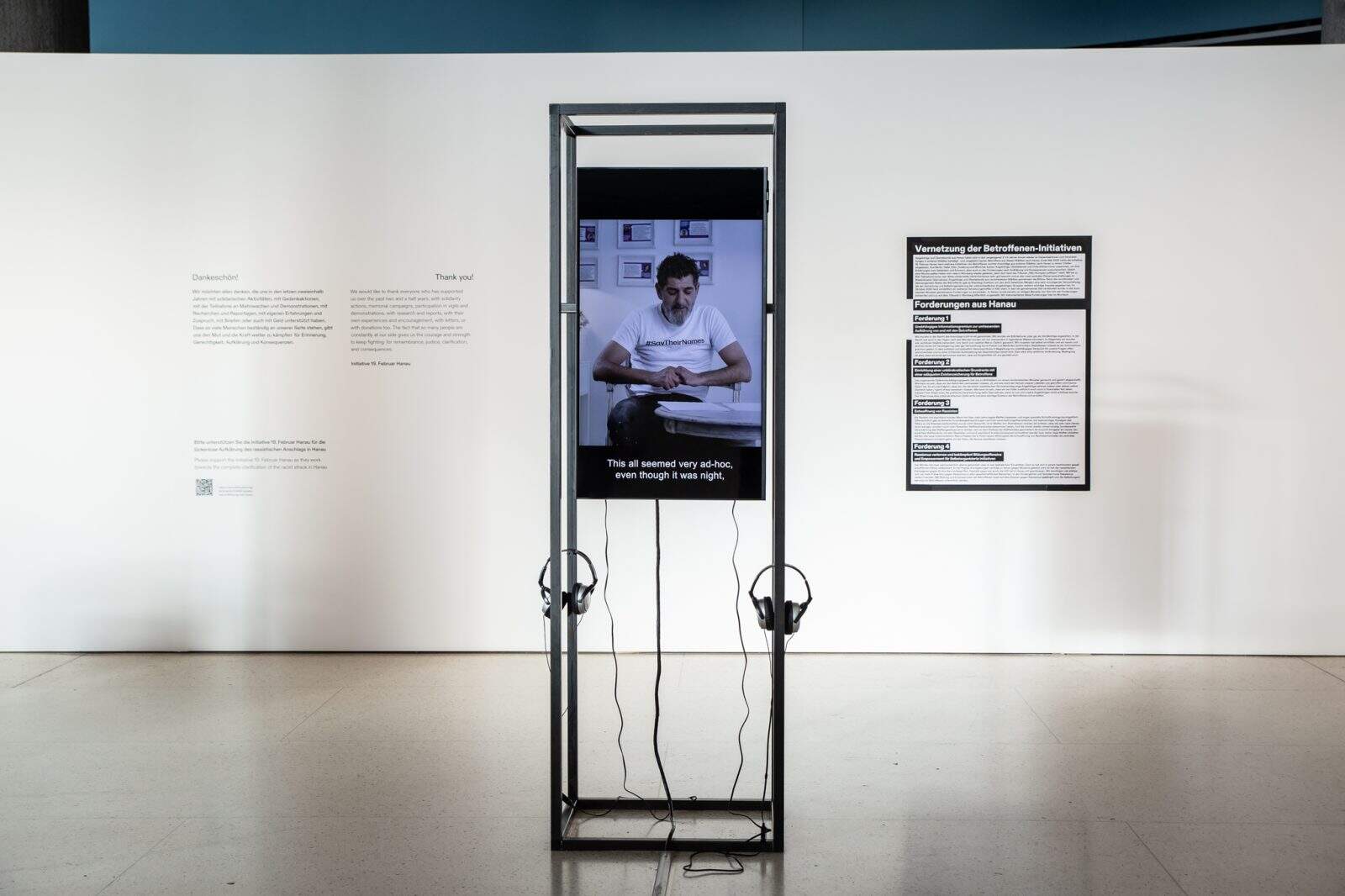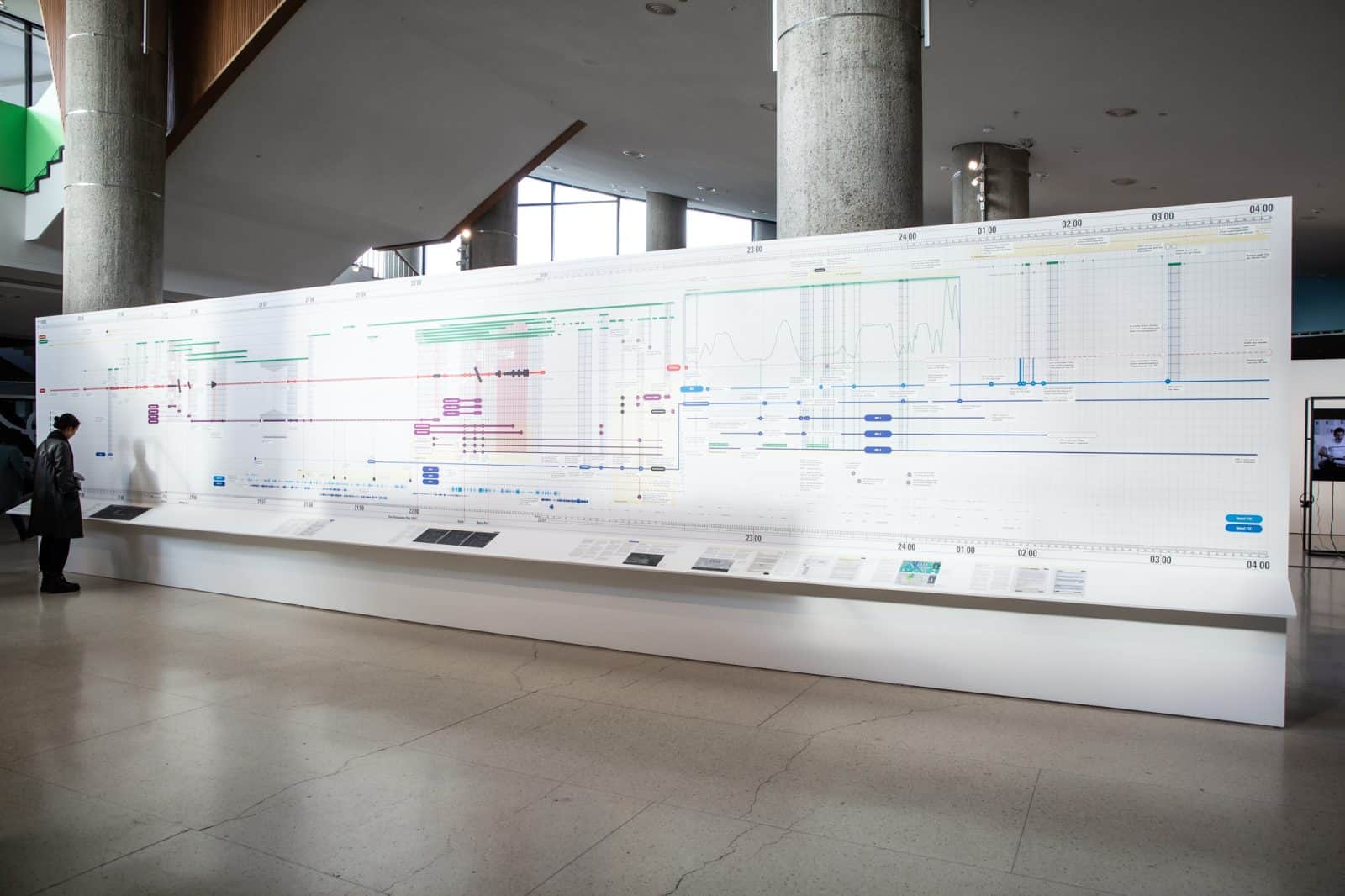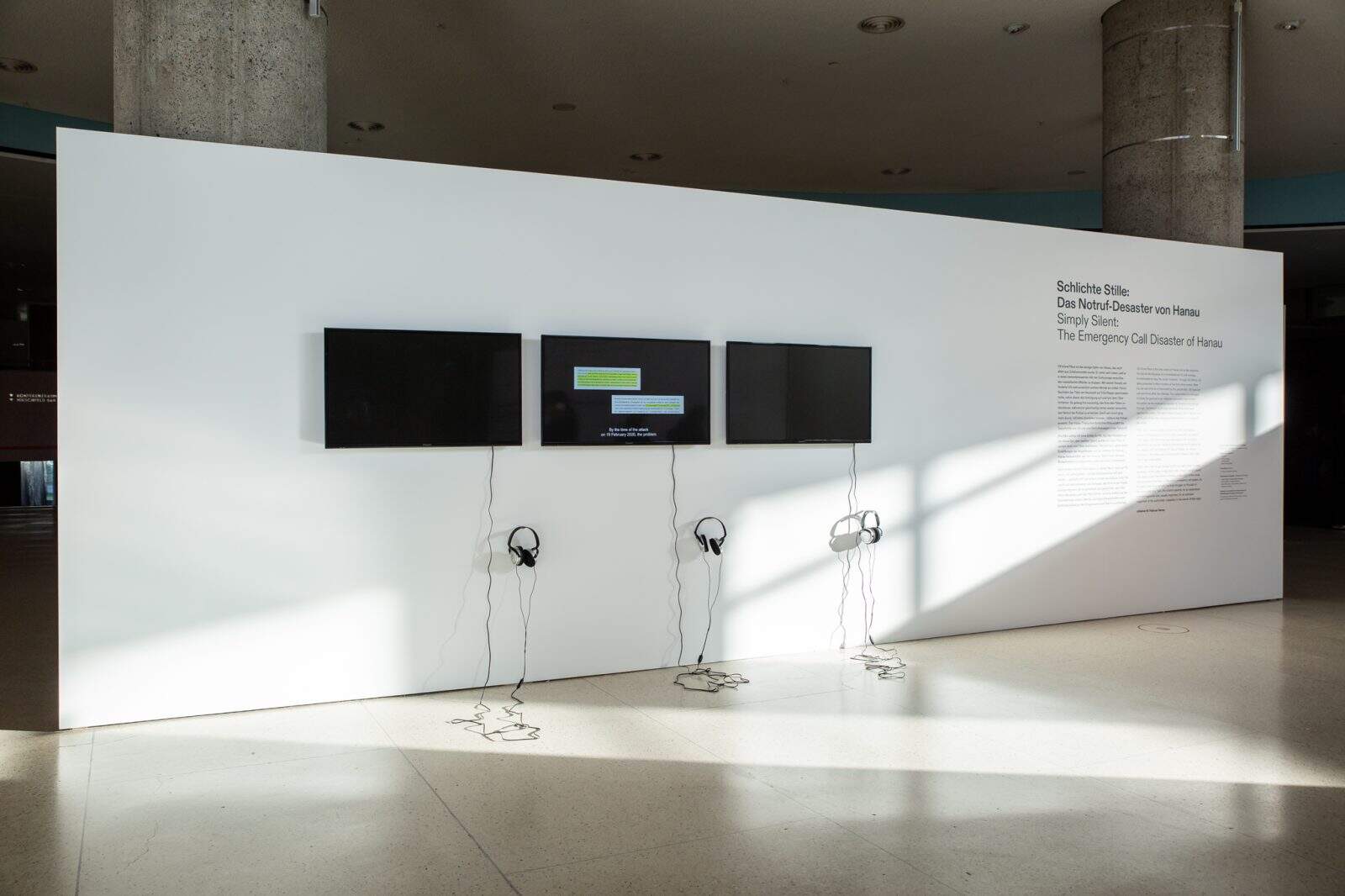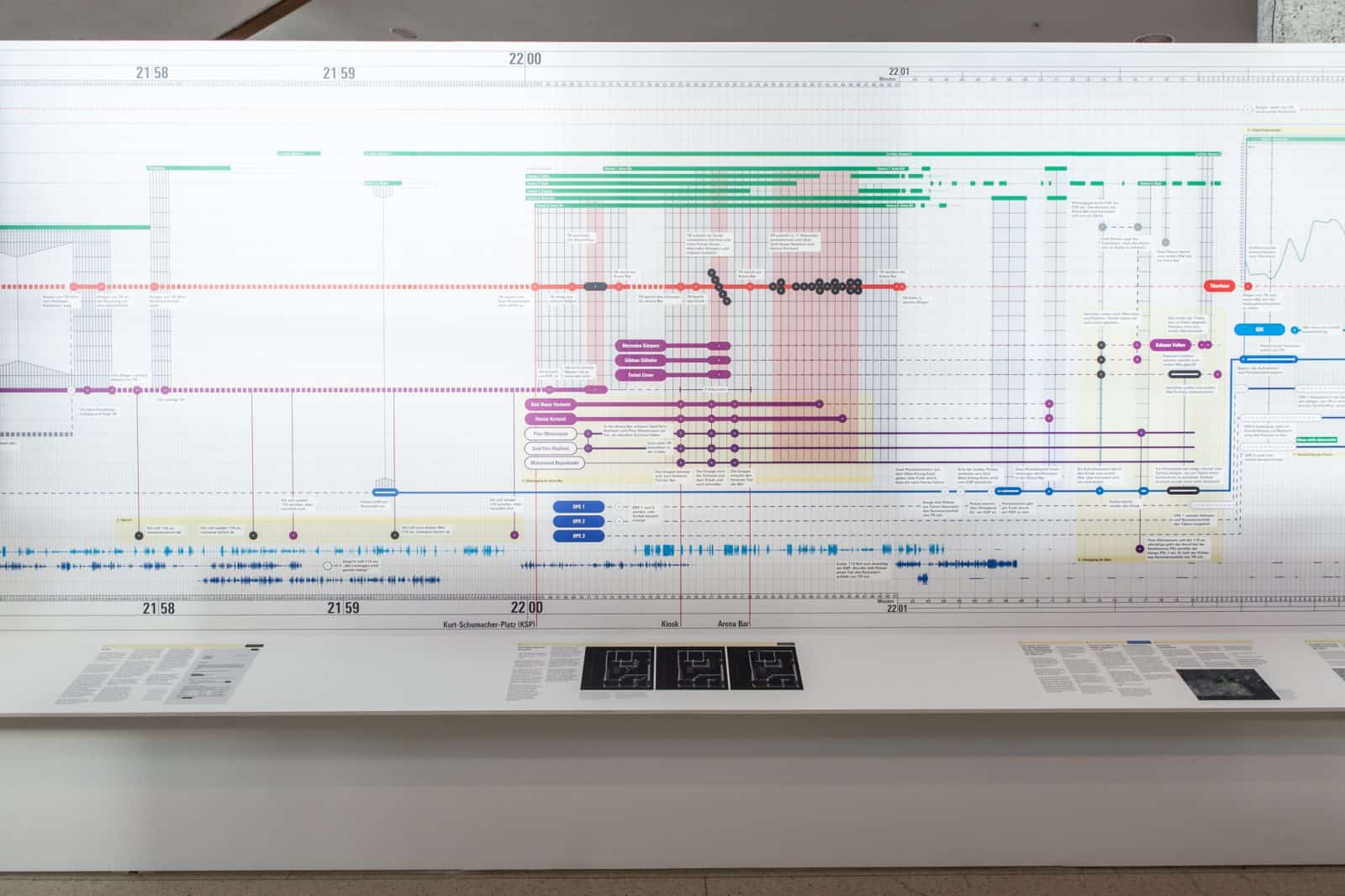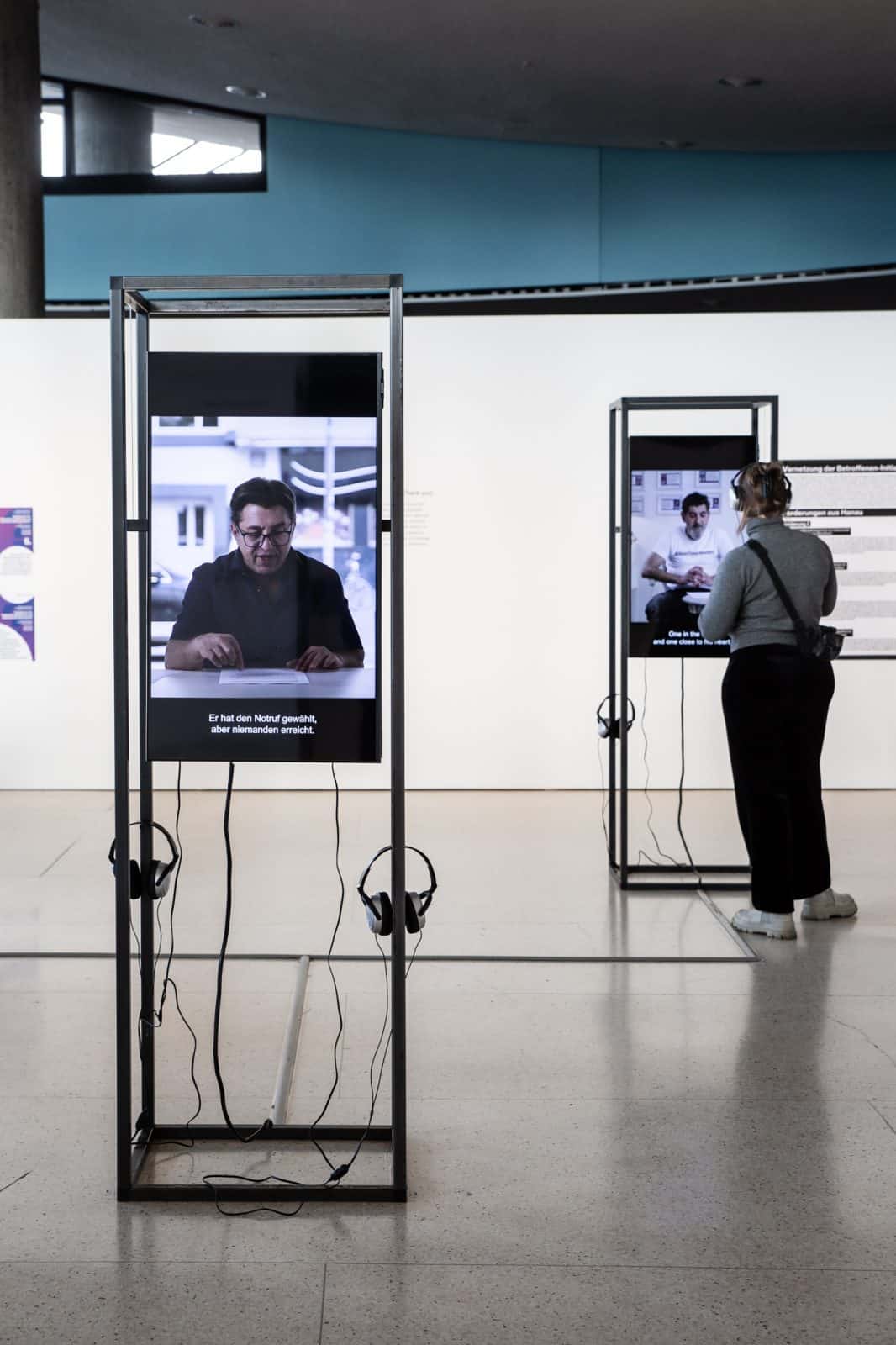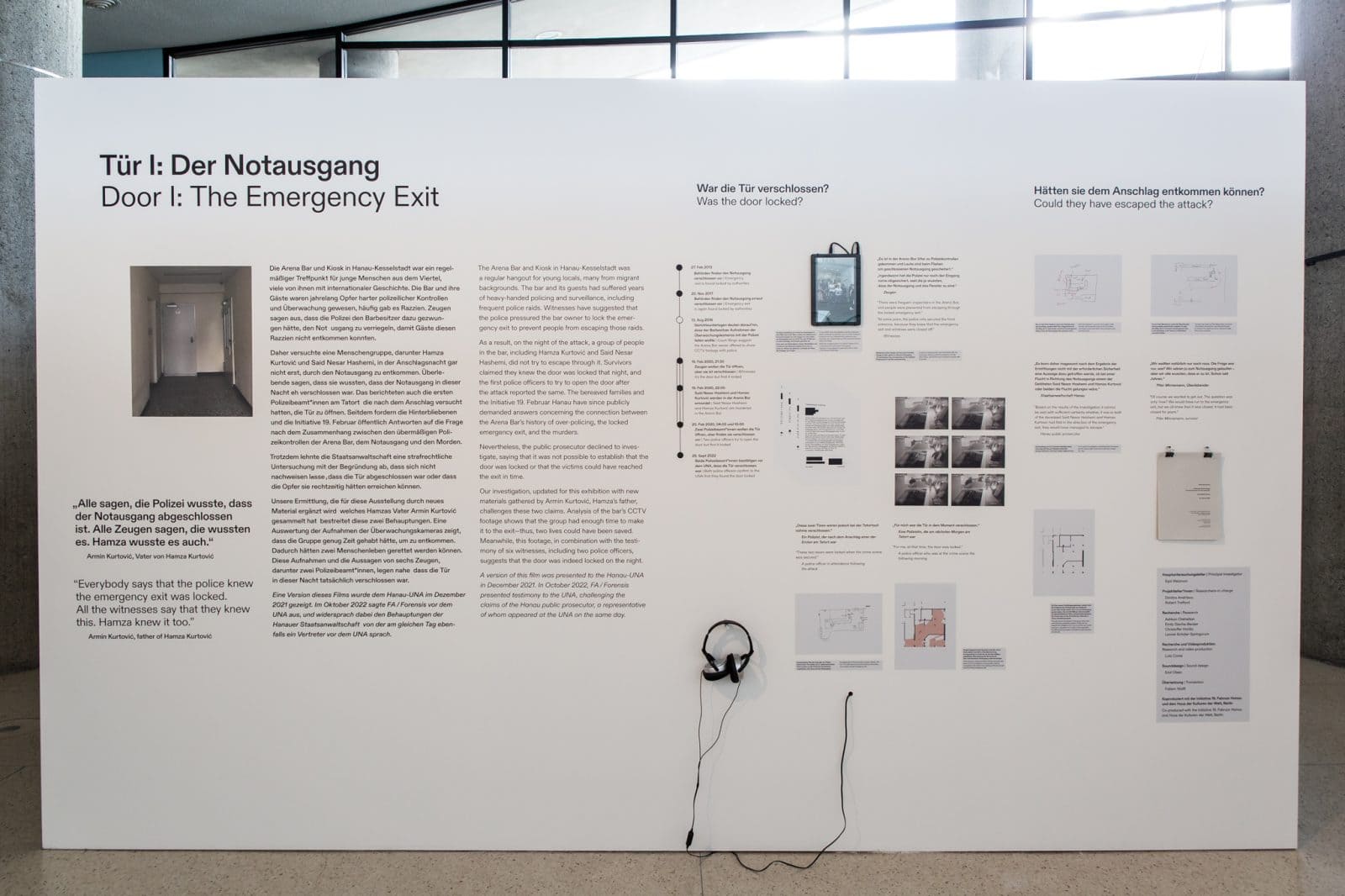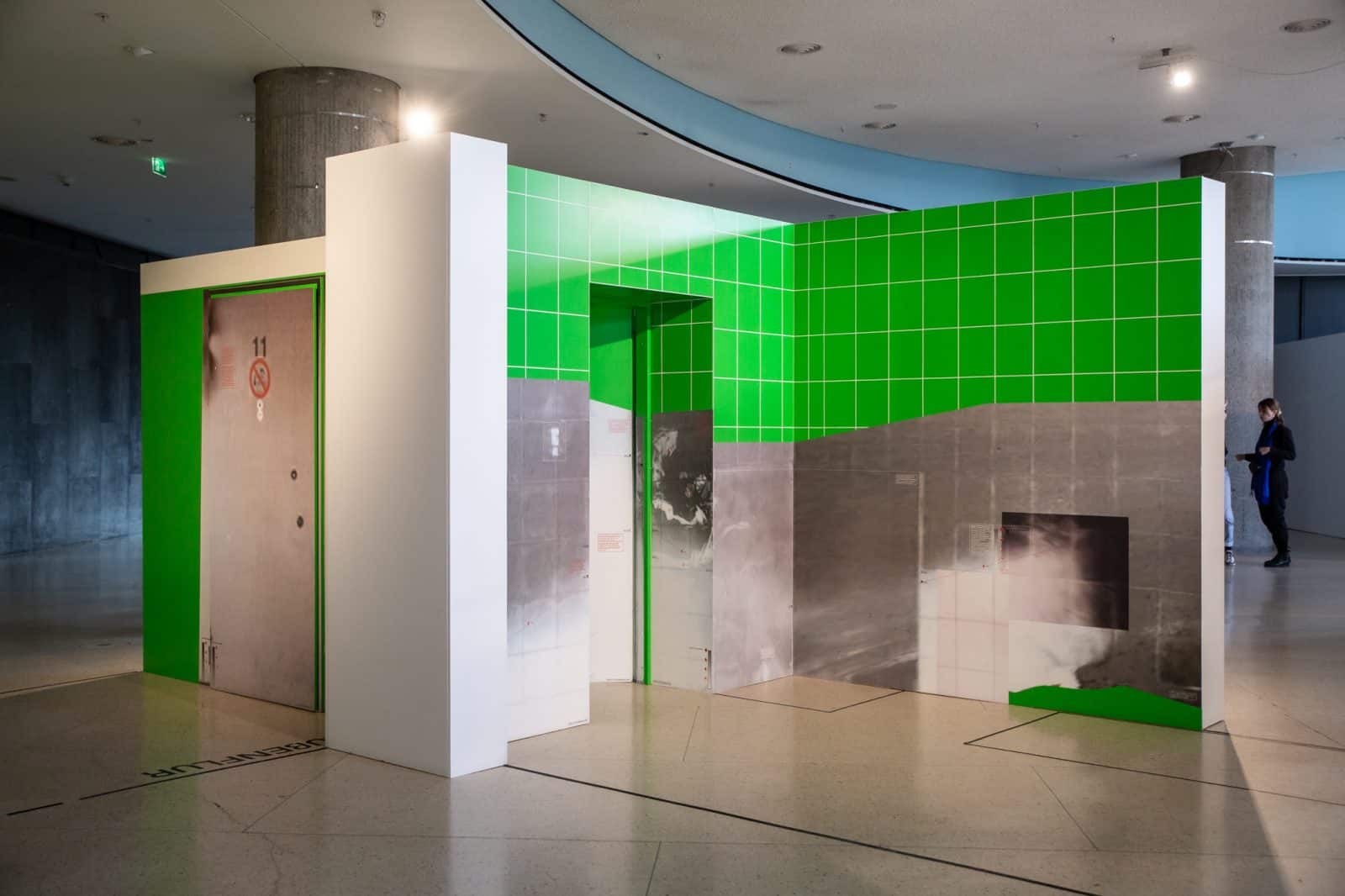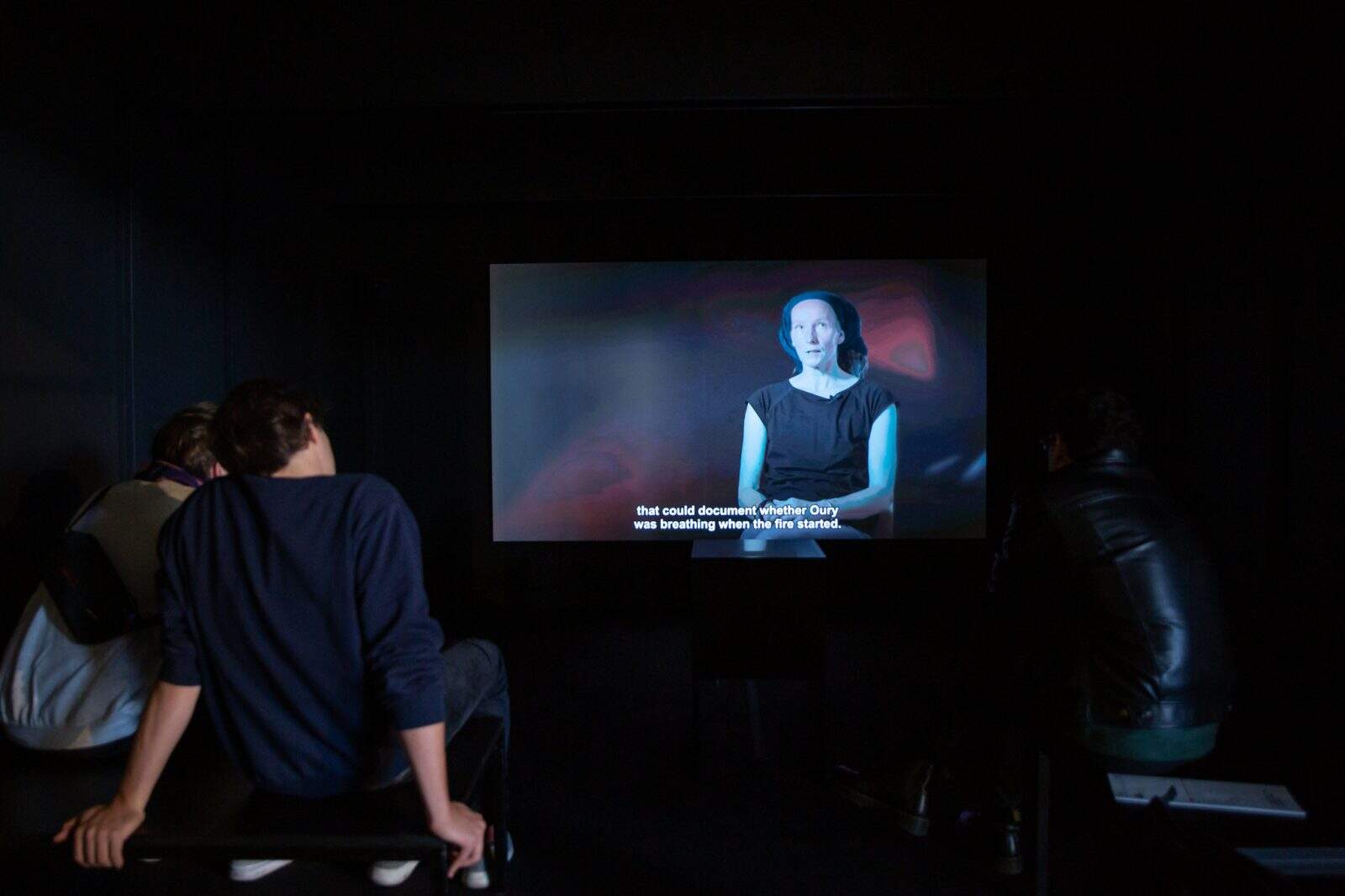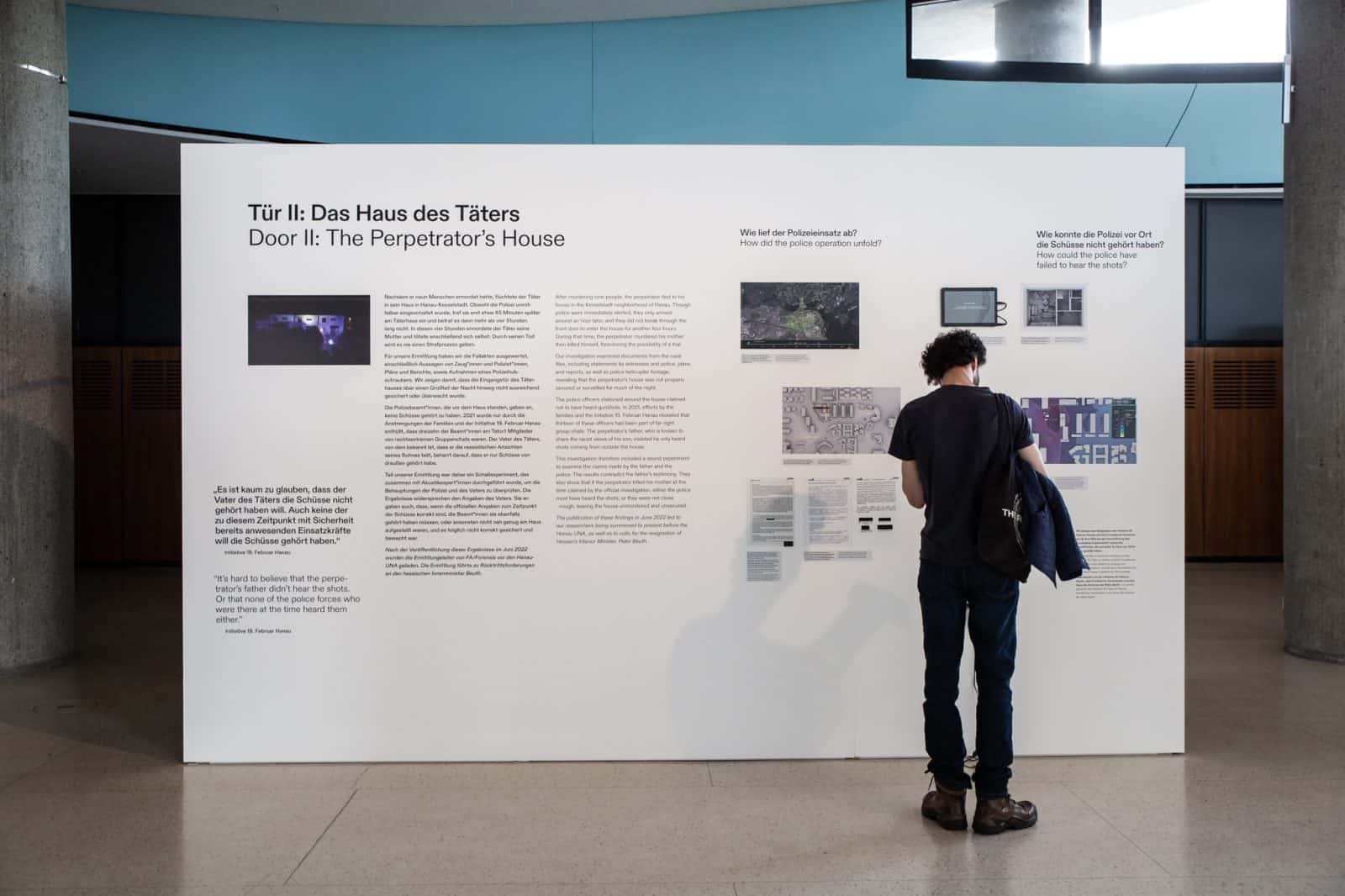Venue
Date
Exhibition Type
It is nearly three years since nine people were murdered in a racist terror attack in Hanau. It is nearly eighteen years since Oury Jalloh was burnt to death in a police cell in Dessau. The victims’ families, friends, and the survivors are still struggling for accountability.
The exhibition presents three investigations, each concerned with a door, unravelling different aspects of racist violence in Germany. In Hanau, it is the locked emergency exit door of the Arena Bar, and the front door of the perpetrator’s house through which the police failed to pursue him; and in Dessau, the door of the police cell in which Oury burnt to death. Separating and connecting different domains – state, public, and private – doors are physical objects but also social contracts. Closed when they needed to be broken through, open when they needed to be shut, and locked when they needed to be unlocked, these doors embody a failure of the social order; to understand how, these investigations reconstruct the larger context around them, illuminating long-lasting and troubling relationships between racist perpetrators and state agencies in Germany.
Since its first presentation at the Frankfurter Kunstverein, Three Doors has directly influenced the ongoing responses to the Hanau terror attack in politics, society, and the media. Now, the exhibition, along with guided tours and a public programme, draws upon on the experiences of relatives, survivors, and supporters to give visibility to their continuing struggle – and to shed light on deeply entrenched racist structures within Germany – just a stone’s throw from the German federal parliament.
The exhibition ‘Three Doors’ by Forensic Architecture/Forensis, Initiative 19. Februar Hanau, and Initiative in Gedenken an Oury Jalloh was co-produced with Frankfurter Kunstverein and Haus der Kulturen der Welt, Berlin.
